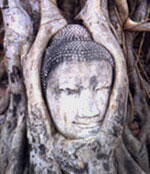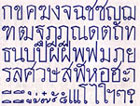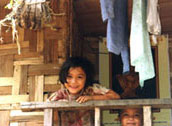Interview With A Country
Here I am walking along with Thailand. This gives me the unique chance to find out some first-hand information. As we stroll together I begin to wonder who this mysterious country is. Some basic ‘first date’ questions arise like, “What is your name?” to which I get the reply, “Well, I used to be called Siam but I changed my name in 1939. Now my official name is The Kingdom of Thailand.”
“Where do you live?” yields the reply, “In south-east Asia. I have Laos to my north and north-east, Myanmar to my north and west, Cambodia to my east, and Malaysia to my south. Oh yeah, by the way, Myanmar had its name changed from Burma in 1989.”
Keeping up with the small talk I ask, “How old are you?” Thailand replies, “Older than you think. Rock paintings dating back to possibly the fourth century BC have been found outside of Bangkok but I was officially founded in 1238 AD. I was never colonized, although the French, British, and Dutch were quite busy with my neighbors and sometimes we were quite busy with each other.” Next I ask, “So, how big are you?” and Thailand says, “I am about twice the size of Wyoming, about the size of France, or 514,000 square kilometers.”
sometimes we were quite busy with each other.” Next I ask, “So, how big are you?” and Thailand says, “I am about twice the size of Wyoming, about the size of France, or 514,000 square kilometers.”
“So why does the yogurt in my refrigerator have the expiration year of 2543 stamped on it?” “Well, for you it may be the year 2000 AD, but for me it is also the year 2543 BE because we use both the Gregorian and Buddhist Era calendars here.” I say, “Could you explain more about the calendar thing?” Thailand states, “The Buddhist Era is based on the death of the Lord Buddha in 543 BC making the Buddhist Era calendar 543 years ahead of the Gregorian calendar.” Thailand continues…
“The Mekong River is on my border with Laos. The Andaman Sea and the Gulf of Thailand are in my south. I have many streams, rivers, and canals. I have lush tropical forests, gorgeous beaches, and three seasons: hot, rainy, and cool. The Tourism Authority of Thailand reported that 8,580,332 tourists came to see me last year. Bangkok is my capitol and my biggest city with over nine million residents. Chiang Mai is my second biggest city. I have a total of about 61 million residents and I am divided into 76 provinces.”
tourists came to see me last year. Bangkok is my capitol and my biggest city with over nine million residents. Chiang Mai is my second biggest city. I have a total of about 61 million residents and I am divided into 76 provinces.”
Further chatting reveals a country ruled by a democratic constitutional monarchy. The population is 95% Buddhist, 4% Muslim, and has small Hindu and Christian populations also. Thailand is a firm believer in the freedom of religious choice. There are over 30,000 Buddhist temples and about 2,000 mosques in Thailand. Religion plays a major role in daily life.
Patterns of migration, both ancient and more recent, have shaped the country into a diverse nation. A mosaic of different people and cultures reside within Thailand including Thai, Chinese, Lao, Khmer, Shan, Muslin, Mon, and different groups of hill tribes.
The majority of the population is Thai (75%), and the second largest group is Chinese (14%). Individual ethnic groups typically maintain their native language and customs in addition to speaking Thai. This multiplicity accounts for the diverse sights, sounds, languages, forms of dress, and rituals one may see and hear while traveling through the country.
groups typically maintain their native language and customs in addition to speaking Thai. This multiplicity accounts for the diverse sights, sounds, languages, forms of dress, and rituals one may see and hear while traveling through the country.
I find walking along with Thailand much less of a challenge than learning the Thai alphabet. Created by King Ramkhamhaeng in 1283 AD, the 44 consonants and 32 vowels create an initial shock in most upon first contact. Thai is a tonal language. The same ‘word’ pronounced with a high, mid, low, rising, or falling tone can render five different meanings.
Because of these dramatic differences in language and culture I sometimes feel very out of place and I get homesick. I miss speaking my native language at super sonic speed, functioning on automatic pilot, and hanging out with my family. This feeling passes.
The rice fields, winding hills, mountain tops, valleys, shopping malls, rivers, beaches, butterflies, birds, traffic jams, sleepy villages, bamboo huts, temples, markets, and most importantly, the people, remind me that Thailand is someone worth getting to know.
